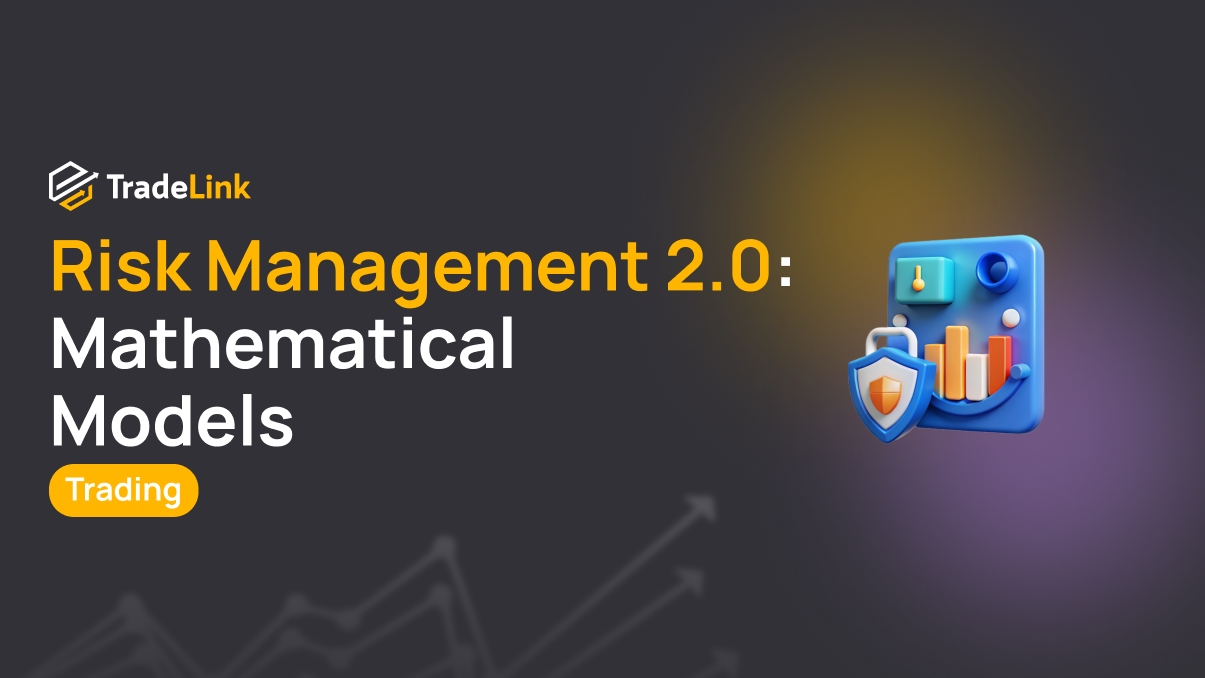Risk Management 2.0: How Mathematical Models Help Traders Survive

Contents
- Introduction
- What is Risk Management 2.0
- The Role of Mathematical Models in Risk Management
- Why Traditional Risk Management Falls Short
- Volatility and Unpredictability of the Crypto Market
- Key Mathematical Tools in Risk Management 2.0
- How Mathematical Models Help Traders Survive
- Practical Tips for Implementing Models
- Conclusion
Introduction
Modern financial and cryptocurrency markets are characterized by rapid changes and unpredictable price fluctuations. Traditional risk management methods, relying on simple stop-losses and fixed risk/reward ratios, are becoming insufficient for consistent trading.
To preserve capital and ensure the sustainability of trading strategies, traders are increasingly turning to mathematical models and algorithms that enable more accurate risk assessment and strategy adaptation to market volatility.
What is Risk Management 2.0

Risk Management 2.0 refers to an advanced approach to risk management that leverages analytics and quantitative methods. Unlike traditional methods dominated by intuition and static rules, this approach employs probabilistic calculations, mathematical models, and algorithmic techniques. It allows traders to flexibly adapt strategies to market changes and minimize the likelihood of significant drawdowns.
The Role of Mathematical Models in Risk Management
Mathematical models help quantify the likelihood of losses and predict capital dynamics under various scenarios. They enable traders to:
- Calculate the probability of losing a specific portion of capital
- Optimize position sizes based on current volatility
- Mitigate the impact of random factors through scenario analysis
- Improve the accuracy of trading decisions through statistical data processing
Mathematical tools are a cornerstone of systematic trading, where success depends on rigorous analytics and effective risk management rather than intuition.
Why Traditional Risk Management Falls Short
Basic risk management methods, while useful for beginners, have several limitations:
- Fixed stop-losses fail to account for volatility, often leading to premature position closures.
- Simple risk/reward ratios do not reflect the probability of trade outcomes.
- Ignoring accumulated statistics prevents traders from adapting their strategies.
- Lack of scenario analysis leaves traders unprepared for rare but critical events.
These shortcomings highlight the need for a quantitative approach in highly uncertain markets.
Volatility and Unpredictability of the Crypto Market

The cryptocurrency market exhibits significantly higher volatility than traditional assets. Sharp price swings can wipe out profitable strategies in minutes. Additionally, the crypto market is prone to:
- Low liquidity for certain assets
- High sensitivity to news and influencer posts
- Technical glitches on exchanges
- Manipulations by large holders (so-called whales)
These factors make risk management particularly challenging but underscore the value of mathematical tools that help mitigate instability and reduce risks.
Key Mathematical Tools in Risk Management 2.0

The primary methods used in quantitative risk management can be categorized by their purpose:
| Tool | Description | Practical Application |
|---|---|---|
| Value at Risk (VaR) | Estimates potential losses at a given confidence level | Calculates maximum loss over a period |
| Monte Carlo | Simulates multiple scenarios | Forecasts potential drawdowns |
| Kelly Criterion | Determines the optimal capital allocation for a trade | Manages position sizes |
| Volatility Analysis | Measures price fluctuation amplitude | Adjusts stop-losses and take-profits |
Mathematical tools enable a shift from subjective decisions to objective risk assessments. They help adapt strategies to changing volatility or allocate capital across assets to reduce risk correlation. Thus, risk management evolves from a mere safety mechanism into a robust analytical tool.
How Mathematical Models Help Traders Survive
Applying quantitative methods allows traders not only to limit losses but also to enhance the resilience of their trading systems. Models help identify critical scenarios before they occur, enabling preemptive strategy adjustments. This reduces the likelihood of catastrophic losses and increases the chances of preserving capital during market crises.
Practical Tips for Implementing Models

For traders looking to adopt Risk Management 2.0, here are some key recommendations:
- Start by maintaining a detailed trading journal and analyzing statistics
- Use demo accounts to test models without financial risk
- Learn basic methods like VaR calculations and Monte Carlo simulations
- Gradually incorporate algorithmic tools and automation
- Define key metrics (win rate, risk/reward ratio, maximum drawdown) and track them regularly
Consistent steps will help build a disciplined, quantitatively grounded approach to risk management, making trading strategies stable in volatile markets.
Conclusion
Risk Management 2.0 opens new horizons for traders, enabling them not only to minimize losses but also to build resilient trading systems capable of withstanding market turbulence. By leveraging mathematical models and quantitative methods, trading reaches a new level where decisions are driven by objective data rather than intuition.
Transitioning to quantitative risk management requires discipline, analysis, and gradual mastery of new methods, but it pays off by ensuring long-term stability and confidence in trading.